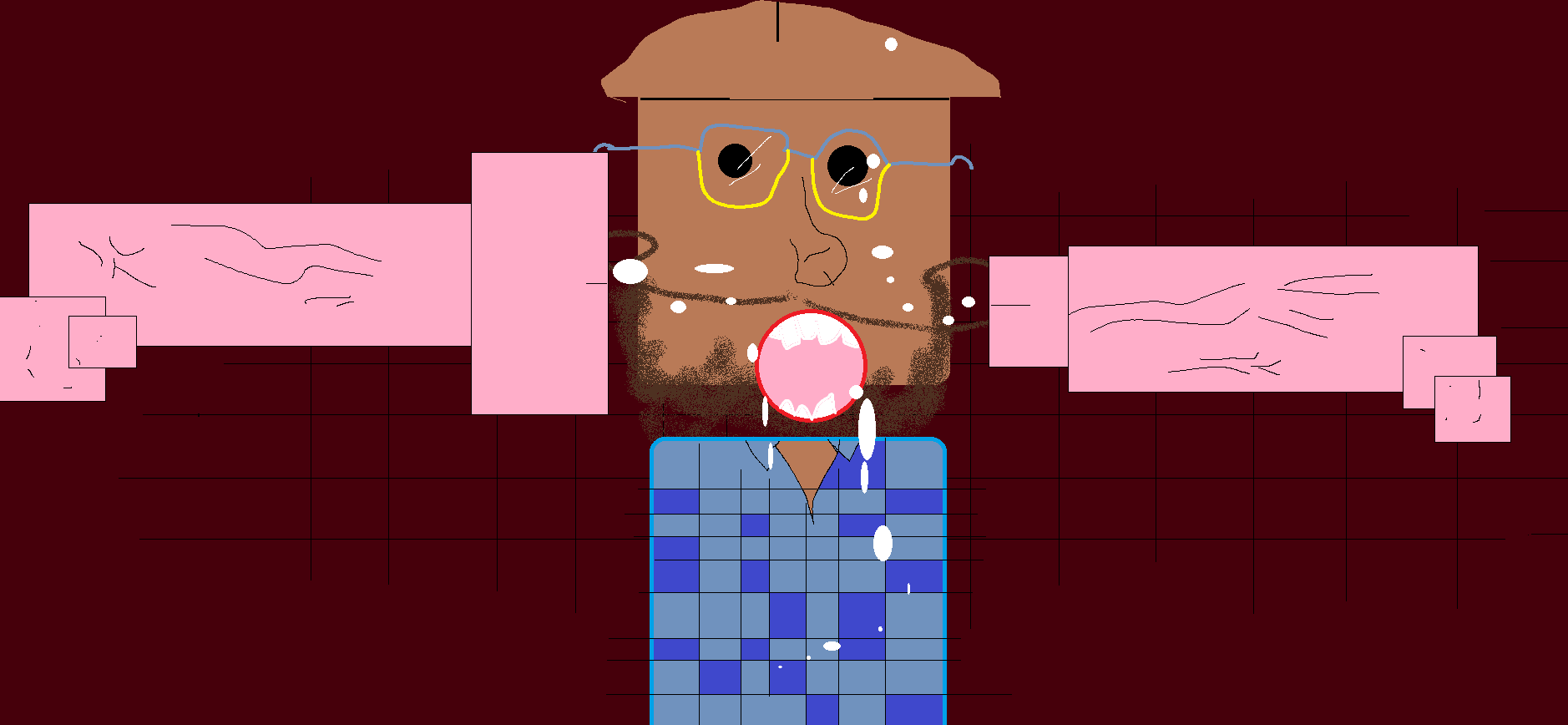-
Posts
33,134 -
Joined
-
Last visited
-
Days Won
53
Content Type
Profiles
Forums
Events
Everything posted by Cupe
-
he wants them before this weekend, and behringer ones take too long to get or some shit thanks for the info but
-
dubstep is perfect to scratch to i duno why i never noticed that before
-
What's a decent pair of headphones (DJ type) for 50ish bucks. Even if it's a bit over still say it cause they might be on sale Question is not for me, but answer quick K THX
-
interesting. that shaker or whatever it is through the whole song gets a bit repetitive. like the melody and shit though
-
hahahaha leetsauce
-
cause i can't even do what you're saying
-
i was wonderin that lol
-
someone didn't pay the bills
-
i duno what you were doing.. anyway use this link to edit your avatar http://i42.tinypic.com/2ikciah.png
-
After seeing where this thread has reached I'm going to lock it. If anything further needs to be discussed, please create new threads. You WILL NOT turn it into the same nature of conversation as has happened here. If a new thread is created of the same topic, don't drag your posting emo from this thread accross to the others. Please post with a fresh mind and state your facts clearly. Think before you post. See these links for further information: http://www.parliament.qld.gov.au/view/c ... t%2074.pdf http://www.olgr.qld.gov.au/resources/li ... ockout.pdf http://queenslandlockedout.com/ http://www.facebook.com/qldlockedout http://www.olgr.qld.gov.au/industry/liq ... ndex.shtml http://www.getinvolved.qld.gov.au/eSurv ... 8B459B4470
-
no way comment here
-

ADJF voice-over thingie (im fully aware this makes no sense)
Cupe replied to LabRat's topic in DJ Headquarters
+2 -
i like the little part near the end where it drops into breaks the rest is cool. keep workin on it
-
that and you can promo it here anyway
-
That's pretty farked. Just post the pic here and we'll get someone to resize it or something?
-
You can now receive rep by posting. I'm not going to mention how many posts it takes to get a point of rep, but you will notice you rep increasing the more you post This forum is heavily moderated, so spamming won't help your cause (shit posts will be deleted).
-
A couple of people have asked me what is the best way to get started with scratching, so I thought I'd write a little guide aimed at beginners: - What is hamster and regular style and which should I use? "Hamster" style means scratching with the crossfader reversed, so when you move the fader to the left, the right turntable comes on and vice versa. Some people find this a more natural way to scratch (me included). The main thing is to choose a style that you prefer and stick to it. Switching between styles at the beginning will only slow up your progress. Don't be influenced by the style other people use, for example, just because QBert scratches hamster it doesn't mean you should. What records do I scratch with? Scratching takes years to master. If you wanna become good, you'll be doing LOTS of practice. Every time you perform a scratch on a certain sample, you're wearing it away. It's essential not to practice with your treasured vinyl collection! Get yourself a couple of battle records to practice with and when they wear away, get some more. I'd recommend SuperSeal, because it has some common sounds like ahhhhh and fresh arranged so they're skipless. What are "skipless" records? Imagine you stuck a little label on your record at the 12 o'clock mark. When you play the record, the label will go round and pass the same point every so often. Skipless records work by having the same sample at exactly the same point spread over several rotations. This means that if the needle skips forwards or backwards a couple of grooves, it'll land in exactly the same spot on the same sample. When you start out, you might be a little heavy handed and the needle skipping can be very frustrating. Buying battle records that have skipless sections is one way to get around this. What scratches should I learn first? Nearly all scratches are based on simple foundation scratches. It's important to start with the very basic scratches first. A lot of DJs will try and learn crabs and 2-clicks before they learn anything else simply cos to them they sound impressive. That's not the best way to learn. If you wanted to learn how to play a guitar, you wouldn't pick one up and try playing a Hendrix solo - you'd start by playing single notes and work from there - scratching is no different. If you want the beat I use for the examples, you can download it by clicking HERE. It's in wav format so you can loop it up using the Focus Looper I posted, or in the program of your choice. What are the foundation scratches? Baby - The baby scratch is the first scratch anyone should learn. All you're doing is moving the record back and forth in time with the music. There are various ways to perform it. Here's a little file with some examples: - .:. BABY SCRATCHES .:. The file is broken down into 6 parts. Number 1 is the basic baby, the others are just examples of things you can try for a bit of variation: - 1. Regular baby scratch. Just move the record forwards and backwards in a regular motion in time with the beat. This is the one you'll start with. Don't really worry about the other 5 below until you can do this one with precision. 2. Fast pull back. Let the record play at normal speed forwards and pull it back quickly. 3. Double time regular baby. Same as number 1, but done twice as fast. 4. Short baby. A bit like number 1, but you only use the very start of the sound. This has a more "chopped up" feel to it cos there's a slight gap in between each part of the scratch. It's a little like scratch 3, but you miss out every other cut to leave gaps. 5. Half time baby. Let the record play forwards at the regular speed and pull it back slowly. This is like number 1, but it's half the speed. 6. Short fast pull back. This one is a combination of numbers 2 and 4. The sample plays at regular speed forward, but only let a little bit of it play, then pull the record back quickly. Again, there's a pause between each one so it stays on beat. Forwards - A forward is essentially the same as a baby, except you only hear the forward part of the sample. Open the fader, let the sound play, close the fader, then pull the sound back to the beginning. Marches - Marches are a combination of babies and forwards. This is the first combo you'll learn. As with all scratches, you're aiming to have solid record control and get a clean and even sound. Here's an example using combinations of forwards and some of the different baby scratches mentioned above: - .:. MARCHES .:. Drags - A drag can be performed either forwards or backwards. What you're doing is slowing the record down rather than letting the sample play at it's regular speed. Here's an example: - .:. DRAGS .:. I've exaggerated the drag movement in this example, but you can slow the record down as little or as much as you like as long as it fits in with your combo and doesn't knock you off beat. Tips - A tip is like a really short baby. All you're doing is moving the record back and forth over a short distance to catch just the start of the sound, as in this short example: - .:. TIPS .:. Stabs - Stabs are a little like forwards except you're only catching the very start of the sound. You can also change the pitch of the sound by pushing the record forwards at different speeds. They sound like this in their most basic form: - .:. STABS .:. Chirps - The record movement of a chirp is the same as a baby. If you've practiced your baby scratches so they're nice and clean then give chirps a try. Start with the fader open, then move the record forwards. As soon as you hear the sound start to play, close the fader, but continue moving the record as if you were doing a baby. As you move the record backwards, just before you get to the start of the sample again, open the fader. What you're doing is using the fader to cut away a large portion of the sample. This gives a crisp, defined sound. Here's an example: - .:. CHIRPS .:. Tears - There are many different tear combinations. An easy one to learn first is the 1 forward, 2 back tear. The record motion is a bit like this: - Play sound forwards - Pull back half way - Pause briefly - Pull back to beginning The pause is splitting or "tearing" the sound into two. Here's an example: - .:. TEARS .:. Other tears include the 2 forward, 1 back and the 2 forward, 2 back which is known as the clover tear. Practice various combinations. Transforms - A transform is a technique, not a specific scratch. The fader starts closed and ends closed. What you're basically doing is snapping the fader on and off to chop up a sound. Transforms can be done over the top of other scratches including babies and tears to add more definition to the sound. Here's an example of some simple transform patterns: - .:. TRANSFORMS .:. Why is it better to learn these scratches first? An example of a more advanced scratch is the crab orbit. You move the record forwards and backwards while crabbing the crossfader. What you're doing with the record is a baby scratch. If you haven't practiced the basic faderless baby scratch, then you won't have a nice consistent motion so your advanced scratches will sound sloppy. If you practice all the basic techniques above, then when you move on to flares, 2-clicks, orbits etc. you'll have a head start over people who jumped straight in trying to do them, plus your scratching will sound clean and precise. Even if you only get a few of the basics down, you can use these techniques when you're doing a set to add an extra dimension to your mixing. A few simple scratches here and there sound a lot better than sloppy attempts at complex ones. *****AUDIO SAMPLES CAN BE FOUND HERE. THANKS TO 3STYLE!***** Written by: Sigma
-
+rap'd skank FabDJ: http://www.ausdjforums.com/modules.php? ... ditprofile
-
Why all forums? All you need is ADJF!
-
+rep'd for that response m8
-

ADJF voice-over thingie (im fully aware this makes no sense)
Cupe replied to LabRat's topic in DJ Headquarters
cool idea, would like to see it work
